Este post também está disponível em:
Português
English
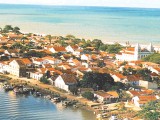
Alcobaça, a very simple place, with good beaches and beautiful walks, the most attractive are the boat trip to the Archipelago of Abrolhos or the reefs of Timbebas.
Municipality originates from a village created on 12 November 1772 by the Ombudsman José Xavier Machado Monteiro in the place called Arraial de Itanhém, located on the banks of the Itanhém River, south of the Captaincy of Porto Seguro.
Current Microregion Extreme South of Bahia being part of the region known as Costa das Baleias.
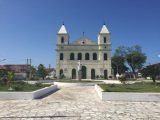
Alcobaça was founded “through a Royal Charter of 1755”.
The so-called Royal Charter that would have given rise to Alcobaça is actually one of the most important documents in the history of Brazil in the 18th century.
It is a document dated 3 March 1755, in which King José I of Portugal orders the creation of the Captaincy of São José do Rio Negro and gives instructions on the foundation of towns in the colony.
This Royal Charter is reproduced in the “Autos de Criação e Ereção da Nova Vila de Alcobaça, na Capitania de Porto Seguro”, a document dated 12 November 1772 which is the real starting point of the history of Alcobaça.
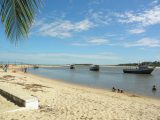
The name of the city derives from Alcobaça (Portugal), a city located in the district of Leiria. There is a legend, however unproven, that the first residents of Alcobaça came from the Portuguese Alcobaça.
St Bernard was chosen as the town’s patron saint and for this reason there are documents from the 19th century where Alcobaça is cited as “Vila de São Bernardo de Alcobaça”.
For those who enjoy underwater life, Pareei das Paredes is the ideal place. Submarine hunting is allowed there.
Videos about Alcobaça Tourist Sites and History
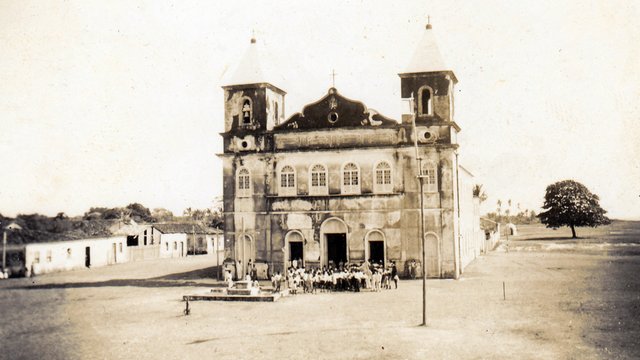

Alcobaça - História
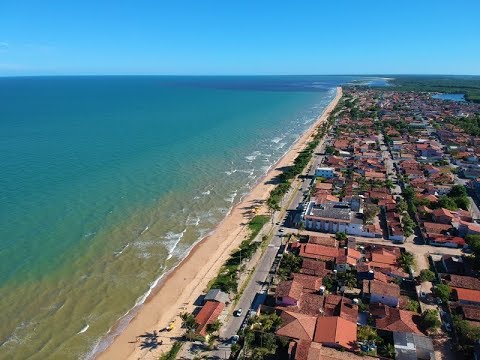
Alcobaça - Guia de Turismo04:15
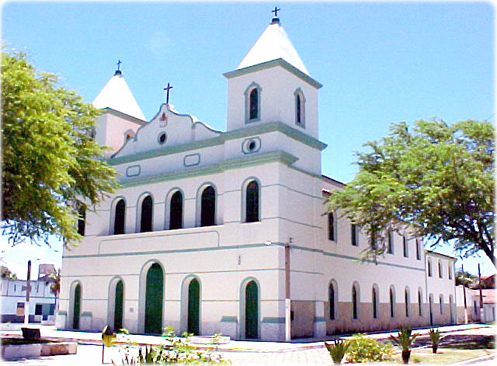
Alcobaça - Drone02:49
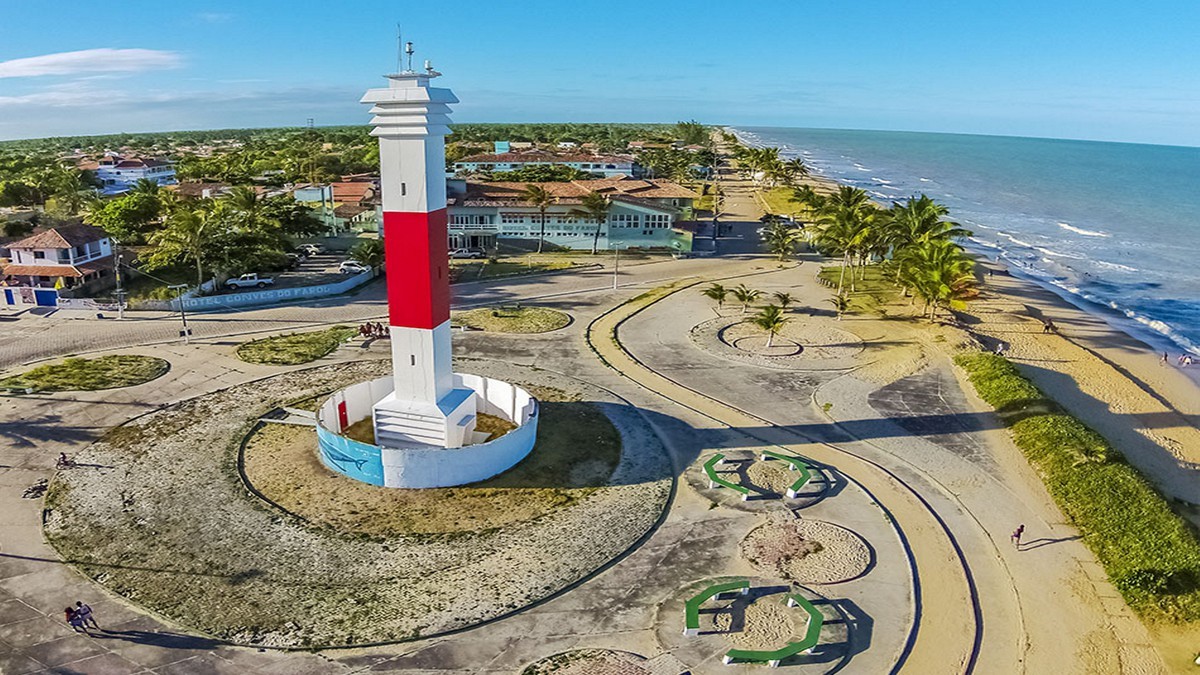
Alcobaça na Bahia - Vista Aérea
View the map of Costa das Balei
Tourist Spots and Architecture of Alcobaça
The city of Alcobaça has beautiful 19th century mansions whose protection was recommended by technicians from the Cultural Heritage Institute of the state of Bahia (IPAC-BA).
In addition to the mansions, the cultural heritage of Alcobaça is also concentrated in folkloric manifestations;
1. Folkloric Festivals
Among the dates of folkloric festivals in Alcobaça, the following stand out:
- 19-20 January: fight between Moors and Christians (known in other parts of Bahia and Brazil as cavalhada, chegança de mouros, marujada etc.)
- 20 January: feast of Saint Sebastian (the height of the Moorish and Christian festivities)
- Pentecost (May or June): feast of the Divine (parade and procession through the streets of the city)
- 29 June: feast of São Pedro (parade and procession of boats on the river Itanhém)
- Christmas season: folguedo de reis, pastorinhas, terno de boi (bumba meu boi) etc.
In Alcobaça, the main folkloric manifestations are related to religious festivals. The biggest religious festival in Alcobaça is the festival of São Bernardo, which takes place every year from 11 August to 21 August, with its peak on 20 August, the day of São Bernardo.
Festa de São Pedro
For a city like Alcobaça, whose economy is largely based on fishing, the day of St Peter (29 June), who is the patron saint of fishermen, is very important in the municipality.
St Peter’s Day is part of the June festivities, but in Alcobaça it has greater weight than St John’s for the local population.
It is the day when the fishermen of Alcobaça thank St Peter for protection during their journeys to the high seas and for the abundance of fish in the seas of Alcobaça.
In addition to the religious festival itself, with a special mass and procession, the Alcobacans also hold a boat procession between the harbour quay and the Itanhém river bar, next to the city.
Festa de São Sebastião
The traditional fight between Moors and Christians of the feast of Saint Sebastian is a folkloric event that takes place in Alcobaça on 19 and 20 January, culminating on the 20th. The manifestation accompanies the religious feast of São Sebastião, on 20 January.
This folkloric manifestation was introduced in Brazil by the Portuguese at the time of the Colony. The fight reflects the wars in the Middle Ages between the Christians and the Moors. The Moors were Arab peoples who inhabited North Africa (mainly Morocco), from where they left to dominate Spain and Portugal for many centuries.
After the Middle Ages, the term “Moor” in Portuguese became synonymous with Muslim, that is, a follower of Muhammad and Islam.
Muslims brought great cultural and scientific advances in the Iberian Peninsula (Portugal and Spain).
In the arts, for example, this representation was common for centuries. It is because of these historical circumstances that the fight between the Moors and Christians that one sees in Alcobaça is staged as the “fight between Good and Evil”.
The fight between Moors and Christians can also be found in several cities in Bahia and Brazil. But its name varies greatly depending on the locality.
Some of the best known names are marujada, cavalhada and expulsion of Moors. The people of Alcobaça refer to this manifestation as the “fight of Moors and Christians”.
2. Architecture and historical heritage
The history of Alcobaça and its architecture is also reflected in the streets of the centre (all the pavements in the town are made of concrete blocks in the shape of a hexagon), where the old mansions and sobrados are located, and in the centenary farms. Some of the town’s sobrados date back to the 19th century, and many were once public buildings, slave quarters or prisons.
In the late 1970s, the Bahia Cultural Heritage Institute (IPAC-BA) began to carry out an architectural study of the entire municipal region to inventory the cultural heritage that deserved to be protected.
2.1. Igreja Matriz de São Bernardo
Matriz Church (front view) in Padre José Porphirio square.

One of the postcards of Alcobaça, the Matriz de São Bernardo Church is located at the head of Praça Padre José Porphirio, in the centre of which a statue of Christ was placed about 30 years ago.
The church dominates the landscape of the city due to its large proportions. From the top of its towers, there is a wide view of the city.
The Mother Church of São Bernardo was originally located near the Itanhém River and remained quite modest throughout its first century of existence.
In the 1860s, Father José Porphirio da Silva, who was vicar of Alcobaça from 29 October 1868, undertook efforts to build a new parish church, the building of which is the one that exists today. Unfortunately, the priest died on 21 January 1873, at the young age of 32, and the construction of the church was only completed after 1887 (fifteen years after his death)..
There were several reforms in the church. One of them took place in 1931. In 1958, the original ceramic roof was replaced with asbestos and the pulpit was removed.
The 1970s saw substantial renovations, including the replacement of the high altar structure, originally made of wood, with masonry. In the 1990s, minor renovations took place, mainly on the façade.
2.2 Casa de Izidro Nascimento
A house built in 1892 by Major Izidro Pedro do Nascimento, currently functioning as a parish residence.
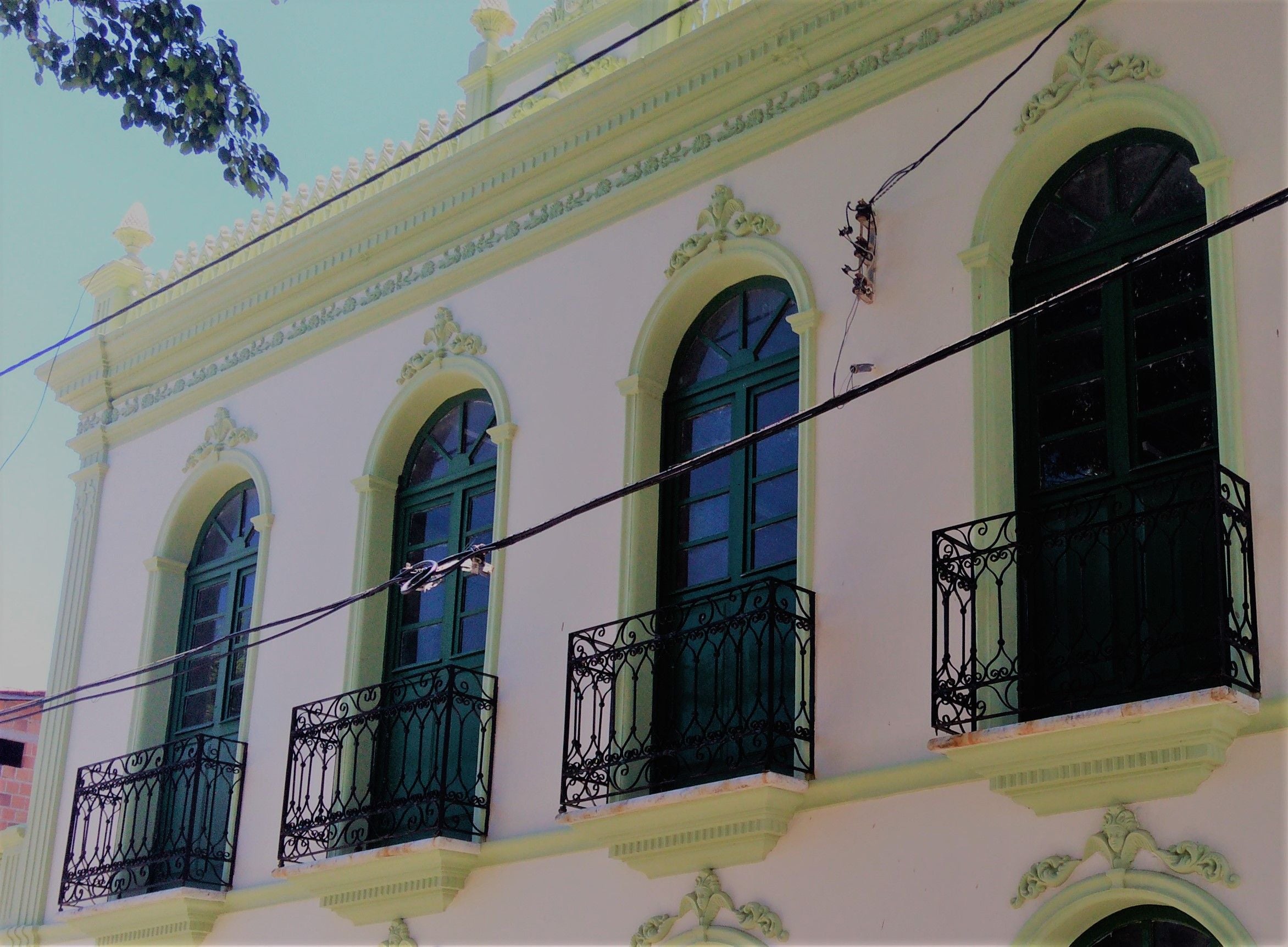
The sobrado known as sobrado Izidro Nascimento, located at Rua Pedro Muniz 206, has a beautiful architectural ensemble, consolidating the area as the historic centre of Alcobaça.
At the top of the main façade is the inscription 1892, which probably indicates the year of construction. The original owner of the property was Major Izidro Pedro do Nascimento (1846-1923).
After his death, the property passed to his heirs, and then to João Macedo and Geraldo Horte, who donated it to the bishopric. Today, the sobrado fulfils the function of parish house and residence of religious.
The sobrado has two floors, plus an attic, which occupies the basement of the gable roof. An external side staircase leads to the main floor (first floor). The interior has been extensively modified over the decades, adapting to new functions.
This sobrado is opposite another, also historic, and even older. This other one is the “Medeiros family mansion”.
2.3. Sobrado da família Medeiros
Este sobrado, também conhecido como casa de Ismael Medeiros, foi uma imponente casa assobrada, situada na rua Pedro Muniz 190, construída por João José de Medeiros (1810-1878), que a deixou por herança a seu filho Ismael Teixeira de Medeiros (1848-1909).
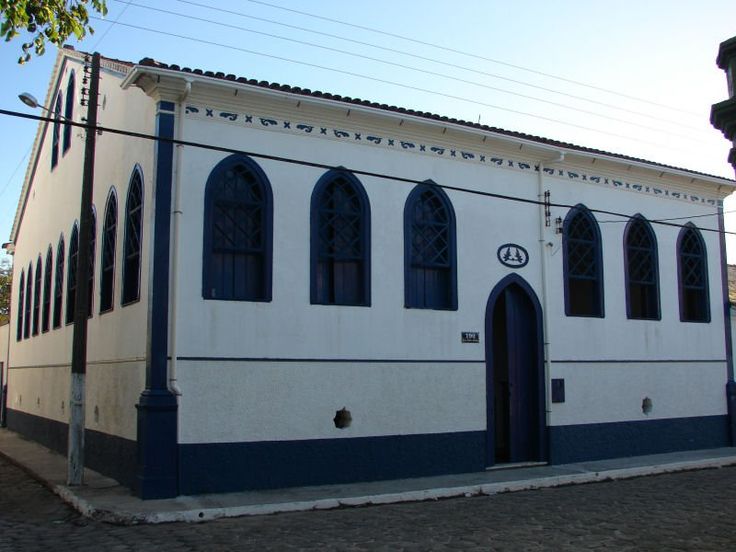
After his death, the property passed to his widow, Rita da Costa Medeiros (1855-1942) and to the couple’s children.
The house was then acquired by José Nunes da Silva, who sold it to Alaor Lins, to whose family it still belongs today.
The building has a regular floor plan, a gable roof, a lighted attic and a high basement. With these characteristics, it had the comfort of a single-storey house and at the same time fulfilled the function of a bourgeois townhouse. According to members of the owner’s family, the high basement was partly used to house slaves and servants.
2.4 Cacimba do Concelho
The Cacimba do Concelho, located on the pavement of a wide avenue in the stretch between the streets Joaquim Muniz and Pedro Muniz (flowing into Padre José Porphirio Square) is a historic source of water in the city.

The cacimba probably originates from a fountain from the second half of the 18th century, which would have saved the population from a drought at the time. But the building that surrounds it is probably, due to its typological characteristics, from the late 19th century.
The cacimba originally opened onto the old Praça do Concelho (hence the name “Cacimba do Concelho” – concelho, with “c” is the traditional designation for municipality, used in Brazil before the adoption of the system of prefectures and widely used even today in Portugal).
The Praça do Concelho was destroyed when the avenue was opened.
The building surrounding the cacimba has an octagonal plan, covered by a pointed dome. At the top, in the centre, is a statue that some locals call a “saint” but which actually represents the winter season. The walls are covered with tiles, decorated with geometric motifs. Four ogival arches give access to the well.
The well was closed around 1973, under the influence of Sister Rafaela of the Order of St Joseph.
The reason was that the town already had a water supply, and the well water no longer met sanitary standards.
A little later, around 1980, the monument had its four access openings sealed by iron railings, on the initiative of Kalid Helal, then owner of the nearby house, who also had the floor of the monument cemented. .
2.5. Municipal Prison
Situated on the banks of the River Itanhém, in Rua Senador Melgaço, this sobrado was built by Captain João Ferreira Trancoso Filho (1829-1901), later passing to his daughter, Julita Ferreira Trancoso and then to her son, Candido Trancoso Sobrinho (1905-1970), who sold it to Senator Medeiros Netto. He donated the building to the municipal administration. After a reform, it is used today as the Department of Education.
2.6. Casa da cultura de Alcobaça (or Casa de Garcia Junior)
This large single-storey house is located in the square Padre José Porphirio, opposite the Matrix Church of São Bernardo. It originally belonged to Antonio Garcia de Medeiros Junior (1861-1945), who was mayor of the city.

The property then passed to the heirs of Garcia Júnior, who donated it to the municipality to be used as a school.
The building was later used as a recreational space from the end of the 1960s. Currently, it houses the Casa da Cultura, where musical, theatrical and cultural events take place, in addition to currently functioning as a museum.
2.7. Calçadão Central
The calçadão, in the city centre.
The city has a street made only for pedestrians, the calçadão. This promenade is full of bars and snack bars, and crosses the centre from the vicinity of the Caixa d’Água Square to a block away from the Padre José Porphirio Square, the square of the Mother Church of São Bernardo.
There are also other promenades in the city in front of the beaches or along the river, but the promenade in the centre is certainly the busiest and most commercial.
2.8. Caixa d’Água Square
The Praça da Caixa d`Água is one of the central squares of the city. It is named after the huge water tank located in the centre of the square, built to ensure the municipal distribution of drinking water.
The place hosts most of the festivals that take place in the city during the night, including parties and public performances.
During the summer and the carnival, an iron or wooden stage is set up on which various groups and bands hired by the municipality perform.
Also on the site are arcade parlours, Internet cafés and supermarkets, as well as the only bank branches in the city (Banco do Brasil and Caixa Econômica Federal).
2.9. Prefeitura
Former site of the town hall, currently undergoing renovation.
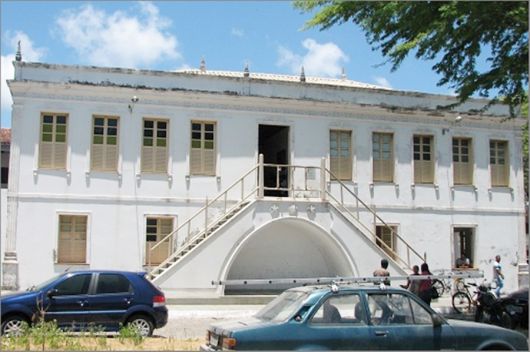
Due to countless incidents (fires, removals, renovations), the history of this building, situated at one end of the Praça Padre José Porphirio, which is dominated by the Mother Church, and facing another small square near the beach, is very extensive. But according to historical sources, the old building was built under the orders of the then mayor, Antonio Garcia de Medeiros Junior (1861-1945).
As was customary in buildings that served as the seat of municipal government, it was to house the Alcobaça town hall and the jail. The compartment located just below the façade’s staircase was to be used as a jail.
During the 1980s, the ground floor housed a branch of the Caixa Econômica Federal and various other offices.
Later, a new headquarters for the Chamber of Councillors was built next door, and the original building was slowly abandoned.
A few years ago the town hall ceased to function in this location and then occupied a building located outside the old town centre, after the renovation was completed, the building returned to house the town hall
2.10. Colônia de pescadores
Fishermen’s colony of Alcobaça.
The fishermen’s colony is the institution that brings together the workers of the branch not only for union purposes, but also to help prepare cultural events, such as the feast of São Sebastião.
The house also acts as a provider of benefits for people related to the activity of fishing who have enrolled there, such as health and pension plans.
The institution is located next to the sobrados of Izidro Nascimento and of Familia Medeiros.
3. Beaches of Alcobaça
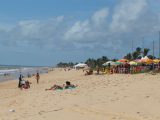
3.1 Praia da Barra Beach
Beach where the sea meets the Itanhém River, forming the extensive strip of Manguesal.
Ideal place for water sports and sport fishing.
The place has a beach hut and the Deck da Barra restaurant.
3.2 Praia do Centro Beach
Extensive strip of golden sand with excellent infrastructure of tents, restaurants, inns and hotels.
This beach is one of the favourites for our tourists of any age.
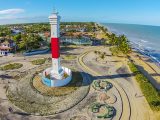
3.3 Praia do Farol Beach
A very quiet place and because it is further away it is the point chosen by younger tourists to hold Lual, meetings around the campfire usually with live music.
This is also one of the points chosen by sea turtles to lay their eggs and at a certain time of the year we can watch a wonderful spectacle where countless chicks run towards the sea.
The spectacle is indescribable.
3.4 Rio Itanhém, Barra do Itanhém and Mangue
Ideal place for practising sea sports and fishing with good structure with bar and restaurant on site. Sightseeing tours, boat hire and garage.
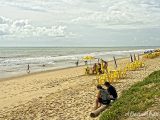
Kayak hire and various other attractions.
3.5 Alcobaça Beach
General view at low tide. The beaches are ideal for all ages, at high tide it is used by surfers, at low tide pools are formed that are pleasant for everyone, whether a child or young people of the best age.
Bahia.ws is the largest tourism and travel guide for Bahia and Salvador.



















